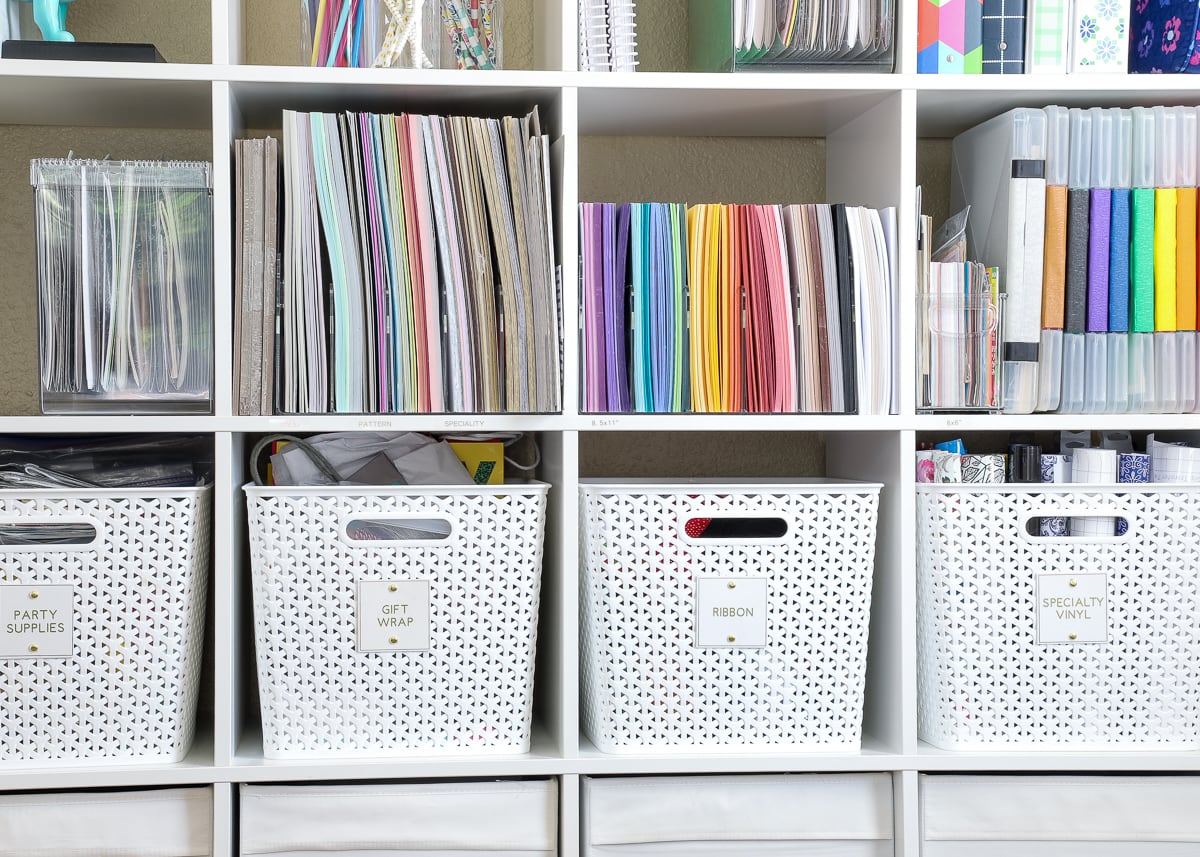

Articles
How To Store Craft Paper
Modified: January 21, 2024
Learn how to store craft paper articles and keep them organized for your next project. Find tips and ideas to prevent damage and ensure easy access when needed.
(Many of the links in this article redirect to a specific reviewed product. Your purchase of these products through affiliate links helps to generate commission for Storables.com, at no extra cost. Learn more)
Introduction
Welcome to the world of crafting, where creativity flows and beautiful projects come to life. Whether you enjoy scrapbooking, card-making, or any other form of craft, one essential component you’ll always need is paper. From patterned cardstock to delicate tissue paper, having a well-organized and properly stored collection of craft paper is crucial to ensure its longevity and usability.
Proper craft paper storage not only helps protect your materials from damage but also makes it easier for you to locate and access them whenever you need to embark on a new project. By following a few simple guidelines and adopting the right storage solutions, you can maximize the lifespan of your craft paper and maintain its pristine condition.
In this article, we will explore the importance of proper craft paper storage, the factors to consider before storing your materials, and provide a step-by-step guide on how to store craft paper effectively. We will also discuss the different containers available for storage, how to organize your paper collection, and offer tips for maintaining the quality of your craft paper. Additionally, we will provide recommendations for storage locations and alternative storage ideas for those with limited space.
So, whether you are a seasoned crafting enthusiast or just starting out, this article will provide you with valuable insights and practical advice on how to store your craft paper collection, ensuring it stays in excellent condition for all your future creative endeavors.
Key Takeaways:
- Proper craft paper storage is essential for preserving quality, reducing clutter, and enhancing creativity, ensuring a seamless and enjoyable crafting experience.
- Consider factors like environment, size, and accessibility when storing craft paper, and choose the right containers to maintain the quality and organization of your collection.
Read more: How To Store Paper Artwork
Importance of Proper Craft Paper Storage
Proper craft paper storage plays a crucial role in preserving the quality and usability of your materials over time. The following are some key reasons why it is important to give attention to how you store your craft paper:
- Prevents physical damage: Craft paper is often delicate and vulnerable to tears, creases, and other forms of physical damage. Storing it in a safe and organized manner helps protect it from accidental mishaps, ensuring that it remains intact and usable for future projects.
- Preserves colors and patterns: Many craft papers feature vibrant colors and intricate patterns that can fade or become distorted over time if exposed to light, moisture, or excessive heat. Proper storage helps shield your craft paper from these elements, preserving their original quality and appearance.
- Reduces clutter: Storing your craft paper in a systematic way minimizes clutter and makes it easier to find the specific sheet or design you need. This saves you valuable time and frustration during your creative process, allowing you to focus on your project rather than rummaging through a messy stack of papers.
- Prevents loss or misplacement: A well-organized storage system ensures that your craft paper is kept in a designated place, reducing the chances of misplacing or losing it. This ensures that you make the most of your investment in craft paper, avoiding unnecessary repurchases.
- Enhances creativity: By having your craft papers neatly stored and readily accessible, you can easily explore various design ideas and experiment with different paper types, sizes, and colors. This convenience encourages creativity and allows for seamless inspiration while working on your craft projects.
Overall, proper craft paper storage not only safeguards your materials but also contributes to a more enjoyable and efficient crafting experience. By implementing the right storage practices, you can extend the lifespan of your craft paper and ensure that it remains vibrant and usable for years to come.
Factors to Consider Before Storing Craft Paper
Before you start organizing and storing your craft paper collection, there are a few important factors to consider. Taking these factors into account will help you create a storage system that is tailored to your needs and ensures optimal preservation of your craft paper. Here are some key factors to consider:
- Environment: The environment in which you store your craft paper can greatly impact its condition. Consider factors such as temperature, humidity, and exposure to light. Ideally, you should store your craft paper in a cool, dry area away from direct sunlight. Fluctuations in temperature and humidity can cause the paper to warp or become brittle, while exposure to sunlight can lead to color fading.
- Size and types of papers: Craft paper comes in various sizes and types, including cardstock, patterned paper, vellum, and more. It is important to consider the specific dimensions of your craft paper and choose storage solutions that can accommodate different sizes and types. Some papers may require special care, such as acid-free storage for delicate or vintage papers.
- Quantity: Assess the size of your craft paper collection and determine how much storage space you will need. If you have a large collection, you may need multiple storage containers or systems to keep everything organized and easily accessible.
- Accessibility: Think about how often you use certain types of craft paper and prioritize their accessibility. Papers that are frequently used should be stored in a way that makes them easily reachable, while less-used papers can be stored in a less accessible location.
- Organizational preferences: Consider your preferred method of organization. You can organize your craft paper by color, type, size, or any other system that works best for you. This will help you find specific papers quickly and efficiently.
- Future growth: Anticipate the growth of your craft paper collection over time. Leave room for expansion and plan your storage system accordingly. This will save you from the hassle of rearranging or reorganizing your collection frequently.
By considering these factors, you can plan and create an effective craft paper storage system that is tailored to your specific needs. This will help you maintain the quality of your craft papers and ensure their longevity, while also making them easily accessible for all your crafting endeavors.
Step-by-Step Guide on How to Store Craft Paper
Now that you’ve considered the factors involved in storing your craft paper, it’s time to dive into the step-by-step process of organizing and storing your collection. Follow these guidelines to ensure that your craft paper remains well-preserved and easily accessible:
- Sort and categorize: Begin by sorting your craft paper into categories based on type, size, or color. This will help you keep track of your collection and make it easier to locate specific papers when needed.
- Choose storage containers: Select appropriate storage containers for your craft paper. Clear plastic bins with lids are an excellent choice as they protect your papers from dust and moisture, while allowing you to easily see what’s inside. Consider using acid-free or archival-quality containers for delicate or valuable papers to prevent any potential damage.
- Use dividers and folders: Within each storage container, use dividers or folders to further organize your craft paper. This will help keep different types or colors separate, making it effortless to find what you need without having to sift through the entire collection.
- Label your containers: Clearly label each storage container with the contents or category of craft paper it holds. This will save you time and effort when searching for specific papers and maintain the overall organization of your collection.
- Store vertically: When placing your craft paper in the storage containers, store them vertically rather than stacking them horizontally. This prevents excessive pressure and weight on the bottom papers, reducing the risk of creasing or bending.
- Maintain a dedicated storage space: Designate a specific area or space for your craft paper storage. Ensure that the area is clean, dry, and away from direct sunlight or extreme temperature fluctuations. Avoid storing the papers near heat sources or in damp basements, as this can cause damage to the paper.
- Regularly review and declutter: Periodically review your craft paper collection to assess its condition and identify any papers that are no longer being used or have become damaged. Decluttering your collection will keep it organized and free up space for new additions.
- Create a backup inventory: It’s a good practice to create a backup inventory of your craft papers. Take photos or make a list of the papers you have stored, along with any important details such as size, type, or pattern. This backup inventory will come in handy when you need to replenish your supplies or plan future projects.
By following these steps, you can establish an efficient and effective system for storing your craft paper collection. This ensures that your papers remain protected, easily accessible, and well-preserved, allowing you to enjoy endless creativity without any hassle.
Choosing the Right Containers for Craft Paper Storage
When it comes to storing your craft paper, choosing the right containers is essential to ensure its safety and longevity. The following are factors to consider when selecting containers for your craft paper storage:
- Material: Opt for containers made of durable materials that can withstand the test of time. Clear plastic containers are a popular choice as they provide visibility of the contents and offer protection against dust and moisture. They are also lightweight and easy to stack, making them ideal for storing craft paper.
- Size: Consider the size of your craft paper collection and select containers that can accommodate various paper sizes. Look for containers that are deep enough to hold larger sheets without causing them to bend or crease. If possible, choose containers with adjustable dividers or compartments to customize the storage space according to your needs.
- Sealability: Look for containers that have secure lids or closures to prevent dust, moisture, and pests from accessing your craft paper. Airtight containers are especially beneficial for preventing humidity-related damage and preserving the quality of delicate papers.
- Archival-quality: If you have valuable or sentimental craft papers, consider investing in archival-quality containers. These containers are acid-free, lignin-free, and buffered with calcium carbonate to protect delicate papers from yellowing, brittleness, and acid migration.
- Portability: If you often take your craft paper on the go or attend crafting events, choose containers that are lightweight and feature handles or wheels for easy transportation. Portable storage options will ensure that your papers remain safe and organized wherever you go.
- Accessibility: Consider how easily you can access and retrieve your craft paper from the chosen containers. Opt for containers that allow for easy stacking and convenient access to your stored papers. Clear containers provide visibility, allowing you to quickly locate the specific paper you need without rummaging through multiple containers.
- Expandability: Anticipate the growth of your craft paper collection and select containers that can accommodate future additions. Choosing stackable or modular containers will enable you to expand your storage space without hassle, saving you time and effort in reorganizing or purchasing additional containers.
- Budget: Consider your budget when selecting containers for craft paper storage. While there are various options available, prioritize the quality and functionality of the containers within your budget range. Remember that investing in good-quality containers will ultimately protect your craft paper collection in the long run.
By carefully considering these factors and choosing the right containers, you can create an efficient and organized storage system for your craft paper collection. This will ensure that your papers remain in excellent condition, easily accessible, and ready for your next creative endeavor.
Store craft paper in a cool, dry place away from direct sunlight to prevent fading and discoloration. Use acid-free storage containers or folders to protect the paper from damage.
Read more: How To Store Construction Paper
Organizing Craft Paper by Type, Size, or Color
Once you have chosen the containers for storing your craft paper, the next step is to organize them in a way that allows for easy access and efficient retrieval. Organizing your craft paper by type, size, or color can help streamline your creative process and save you time searching for specific papers. Here are some tips on how to effectively organize your craft paper collection:
- Organize by type: Sort and group your craft paper by type, such as cardstock, patterned paper, vellum, and specialty papers. This method allows you to quickly locate the specific type of paper you need for a particular project without having to search through the entire collection.
- Arrange by size: If you have craft papers of different sizes, consider arranging them according to size. Store larger sheets separately from smaller sheets to prevent creasing or bending. You can further divide them into subcategories based on their dimensions for easier access.
- Sort by color: Organizing your craft paper by color can be visually appealing and facilitate the creative process. Sort your papers into different color groups or store papers of the same color together. This method allows you to easily find the right color for your projects, especially when working on themes or coordinating color schemes.
- Use dividers or folders: Within each container, consider using dividers or folders to further separate and categorize your craft paper. Dividers help create individual sections for different paper types, sizes, or colors, ensuring that papers stay organized even when stored together.
- Label containers or sections: Clearly label each container or section to indicate the contents or category of craft paper it contains. Labels make it easy to identify and locate specific papers, eliminating guesswork and minimizing the time spent searching for specific colors, sizes, or types.
- Create a reference system: Consider creating a reference system or inventory list to keep track of the craft papers you have. This could be a separate document or a digital spreadsheet where you list the types, sizes, and colors of the papers you own. This reference system can be helpful when planning projects or determining if you need to restock any particular paper.
- Maintain organization: Regularly maintain the organization of your craft paper collection by returning papers to their designated sections after each use. This will help prevent papers from becoming misplaced or mixed up, ensuring that your collection remains organized and easy to navigate.
By organizing your craft paper by type, size, or color and utilizing dividers, labels, and reference systems, you can create a seamless storage and retrieval system for your craft paper collection. This organization not only enhances your workspace but also inspires creativity and allows for smooth project execution.
Tips for Maintaining the Quality of Craft Paper
Craft paper is a valuable resource for any crafter, and it’s important to take measures to maintain its quality and ensure its longevity. By following these tips, you can keep your craft paper in excellent condition and preserve its usability for future projects:
- Handle with clean hands: Always handle craft paper with clean, dry hands, as oils, dirt, and moisture can easily transfer onto the paper, causing stains or damage over time. Consider wearing cotton gloves when handling delicate or valuable papers.
- Store in a controlled environment: Keep your craft paper stored in a clean, dry, and well-ventilated area away from direct sunlight, humidity, and extreme temperature fluctuations. These environmental factors can degrade the quality of the paper and lead to discoloration or deterioration.
- Avoid folding or creasing: Minimize folding or creasing craft paper whenever possible, as repeated folds can weaken and damage the fibers of the paper. If you need to fold the paper, do it gently and along existing fold lines, if available.
- Protect from moisture and humidity: Moisture can cause craft paper to become limp, warp, or develop unsightly water stains. Store your papers in containers with airtight lids or use moisture-absorbing packets to prevent damage from humidity. Consider using a dehumidifier in the storage area if necessary.
- Avoid exposure to direct sunlight: Prolonged exposure to sunlight can fade the colors of your craft paper, especially sensitive dyes and pigments. Store your paper in a location that is shielded from direct sunlight, or use UV-protective sleeves for papers that are particularly susceptible to sun damage.
- Use acid-free storage solutions: Acidic materials can cause craft paper to yellow or become brittle over time. Opt for acid-free storage containers, sleeves, or folders to prevent acid migration and preserve the quality of your papers, especially for vintage or delicate papers.
- Regularly dust and clean: Dust your craft paper collection regularly to prevent the buildup of dust particles, which can cause discoloration or damage. Use a soft, dry cloth or a brush designed specifically for paper to gently remove any dust or debris.
- Keep away from pets and pests: Pets and pests can unintentionally cause damage to your craft paper collection. Store your papers in enclosed containers to protect them from curious pets or any potential damage from insects or rodents.
- Avoid using adhesives directly on the paper: When adhering craft paper to surfaces or adding adhesive elements, avoid using adhesives directly on the paper itself. Instead, use removable adhesive dots or apply adhesive to the surface you are adhering the paper to. This prevents potential damage or staining of the paper.
- Rotate your collection: Regularly rotate and use your craft paper collection to prevent some papers from being stored for extended periods. This ensures that all papers are exposed to a reasonable amount of use, reducing the risk of degradation from prolonged storage.
By implementing these tips, you can maintain the quality and integrity of your craft paper collection. This will allow you to enjoy working with vibrant and pristine papers, ensuring that your creations are always top-notch.
Recommended Storage Locations for Craft Paper
Choosing the right storage location for your craft paper collection is crucial to ensure its preservation and accessibility. Here are some recommended storage locations to consider:
- Craft room or dedicated workspace: If you have a craft room or a designated crafting area, this is an ideal location for storing your craft paper. Having your papers close to your crafting space allows for easy access and seamless integration into your creative process.
- Closed cabinets or shelving units: Closed cabinets or shelving units provide a great storage solution for craft paper, as they offer protection from dust, light, and humidity. Look for cabinets or shelves with adjustable shelves to accommodate various paper sizes and types.
- Under-bed storage: Utilizing under-bed storage containers or bins is a smart option, especially if you have limited space in your crafting area. Using these containers keeps your craft paper neatly tucked away and easily accessible when needed.
- Clear plastic drawers or bins: Clear plastic drawers or bins offer a convenient and visually appealing storage solution for craft paper. They allow you to see the contents at a glance while protecting the papers from dust and moisture.
- Wall-mounted storage systems: Wall-mounted storage systems, such as vertical magazine holders or wall pockets, are excellent for storing and organizing craft paper, particularly if you have limited floor space. These systems keep your papers within reach, while also serving as decorative elements in your craft room.
- Portable storage options: If you frequently craft on the go or attend crafting events, consider portable storage options such as carrying cases or rolling totes specifically designed for craft paper. These options allow you to transport your papers safely and conveniently.
- Custom-built storage solutions: For crafters with a large and diverse paper collection, custom-built storage solutions, such as customized shelves or cabinets, offer an excellent way to organize and protect your craft paper. These solutions can be tailored to your specific needs and storage requirements.
- Climate-controlled storage unit: If you have a large collection of valuable or delicate craft papers, and you lack proper storage space at home, you may consider renting a climate-controlled storage unit. These units maintain consistent temperature and humidity levels, ensuring the long-term preservation of your papers.
When choosing a storage location for your craft paper, prioritize a space that is clean, dry, and free from direct sunlight. Avoid areas with frequent temperature fluctuations or high humidity levels, as they can cause damage to the paper. By storing your craft paper in suitable locations, you can ensure its longevity and preserve its quality for future projects to come.
Alternative Storage Ideas for Limited Space
Having limited space doesn’t mean you can’t effectively store and organize your craft paper collection. With some creativity and innovative thinking, you can maximize your storage options and make the most of the available space. Here are some alternative storage ideas for limited space:
- File folders: Use file folders or magazine holders to vertically store your craft paper. Label each folder or holder with the type, size, or color of the paper inside for easy identification and organization. You can then stack or arrange the folders in a compact space, such as on a shelf or in a drawer.
- Hanging organizers: Utilize hanging organizers, such as shoe organizers or jewelry organizers with clear pockets, to store your craft paper. Hang the organizers on a wall, behind a door, or inside a closet. This allows you to easily view and access your papers while saving valuable floor or shelf space.
- Vertical wall storage: Install adjustable shelving or wall-mounted organizers on your craft room walls. These vertical storage solutions provide space to store your craft paper, keeping it within reach while utilizing vertical space instead of valuable floor space.
- Binder or display books: Place your craft papers in clear plastic sleeves and organize them in a binder or display book. This method not only keeps your papers protected but also allows for easy browsing and retrieval. Store the binder or display book on a shelf or in a drawer.
- Rolling carts: Invest in rolling carts or trolleys with multiple shelves or drawers to store your craft paper. These carts can be easily moved around, allowing you to access your paper collection wherever you need it and then store it away when not in use.
- Accordion file folders: Accordion file folders with multiple sections are an efficient way to store and organize your craft paper. Label each section accordingly and place the file folder on a shelf or in a drawer to save space. This method works well for organizing papers by type, size, or color.
- Magazine holders: Use magazine holders to store and organize your craft paper vertically. Label each holder with the category or color of the papers it holds. Stack the magazine holders on a shelf or in a designated storage area for easy access and space optimization.
- Drawer dividers and trays: Utilize drawer dividers and trays to create sections within a drawer for your craft paper. This allows you to separate different paper types or colors while maximizing the use of drawer space. You can easily access and view your papers by pulling out the drawer.
- Closet or under-shelf storage: Make use of the space inside your closet or underneath shelves by installing hooks, rods, or baskets. Hang your craft papers using clips or hangers, or store them in labeled baskets or bins. This method keeps your papers out of sight but easily accessible and organized.
These alternative storage ideas can help you make efficient use of limited space while keeping your craft paper collection organized and accessible. Remember to choose a method that suits your specific needs and allows for easy retrieval and maintenance of your craft papers.
Read more: How To Store Scrapbook Paper
Conclusion
Craft paper is not only a valuable resource for crafters but also a creative medium that brings projects to life. Proper storage and organization of craft paper are essential to ensure its longevity, usability, and overall quality. By following the tips and guidelines provided in this article, you can create an effective storage system that protects your craft paper from damage and allows for easy access during your creative process.
We discussed the importance of proper craft paper storage, highlighting how it prevents physical damage, preserves colors and patterns, reduces clutter, and enhances creativity. We then explored the factors to consider before storing craft paper, such as the environment, size, quantity, accessibility, organizational preferences, and future growth.
A step-by-step guide was provided to help you store craft paper effectively. From sorting and categorizing the papers to choosing the right containers and creating an organized system, each step contributes to maintaining the quality and usability of your craft paper collection.
We also discussed the importance of choosing the right containers for craft paper storage, considering factors such as material, size, sealability, archival-quality, portability, accessibility, expandability, and budget. Having the appropriate containers ensures proper protection and organization of your craft paper.
Organizing craft paper by type, size, or color was covered in detail, explaining how it streamlines the creative process and allows for easy retrieval. The use of dividers, labels, and reference systems further enhances organization and efficiency.
Additionally, we provided tips for maintaining the quality of craft paper, including handling it with clean hands, storing it in a controlled environment, avoiding folding or creasing, protecting it from moisture and sunlight, using acid-free storage solutions, and regular cleaning and maintenance.
Lastly, we offered recommendations for storage locations for craft paper, including craft rooms, closed cabinets or shelves, under-bed storage, clear plastic drawers or bins, wall-mounted storage systems, portable storage options, custom-built solutions, and climate-controlled storage units. If space is limited, alternative storage ideas such as file folders, hanging organizers, vertical wall storage, binder or display books, rolling carts, accordion file folders, magazine holders, drawer dividers, and closet or under-shelf storage can be utilized effectively.
In conclusion, proper storage and organization of craft paper not only protect your precious materials but also make your creative process smoother and more enjoyable. By implementing the tips and guidelines mentioned in this article, you can maintain the quality and usability of your craft paper collection while unleashing your creativity to its fullest potential.
Frequently Asked Questions about How To Store Craft Paper
Was this page helpful?
At Storables.com, we guarantee accurate and reliable information. Our content, validated by Expert Board Contributors, is crafted following stringent Editorial Policies. We're committed to providing you with well-researched, expert-backed insights for all your informational needs.
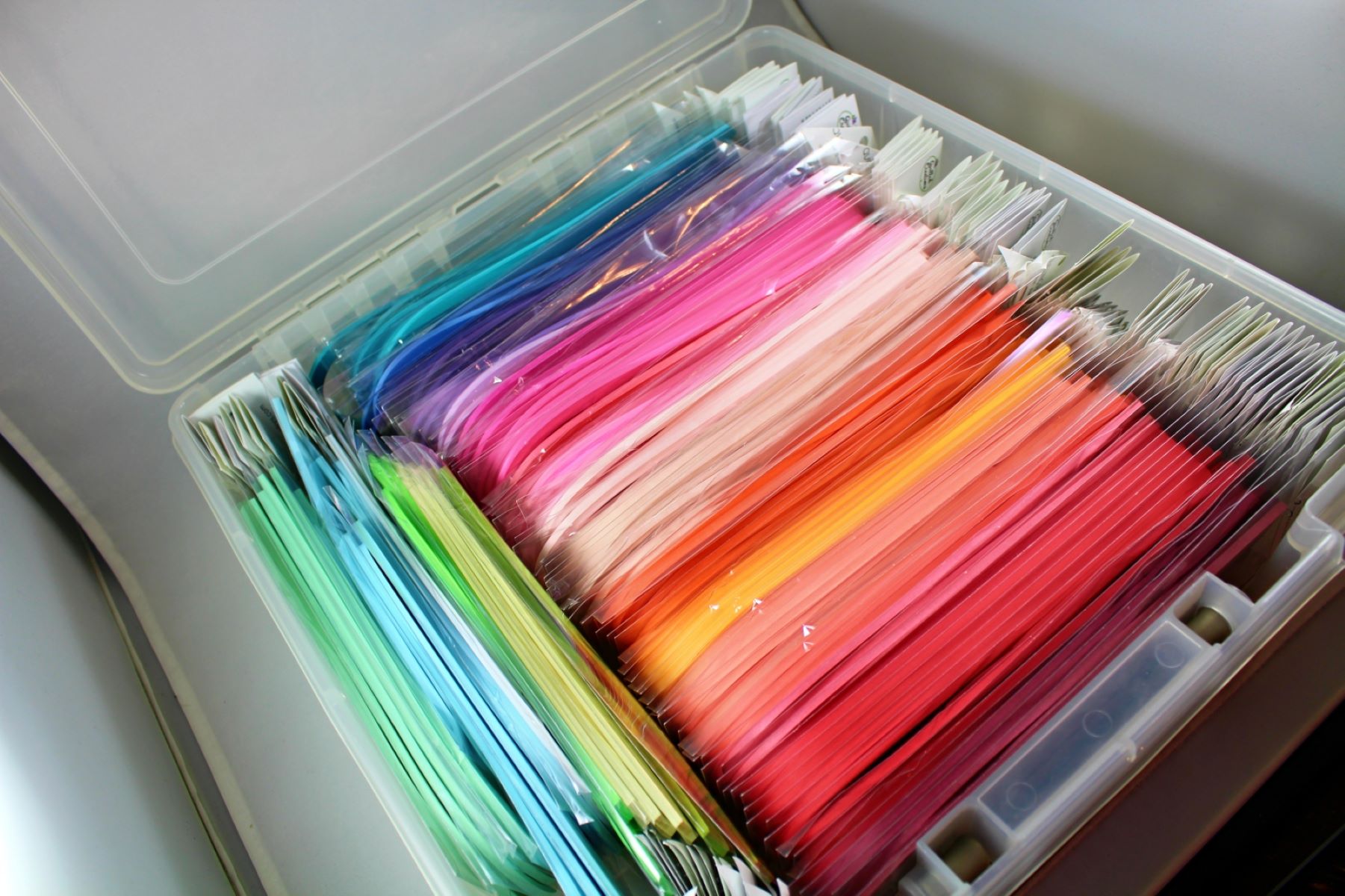
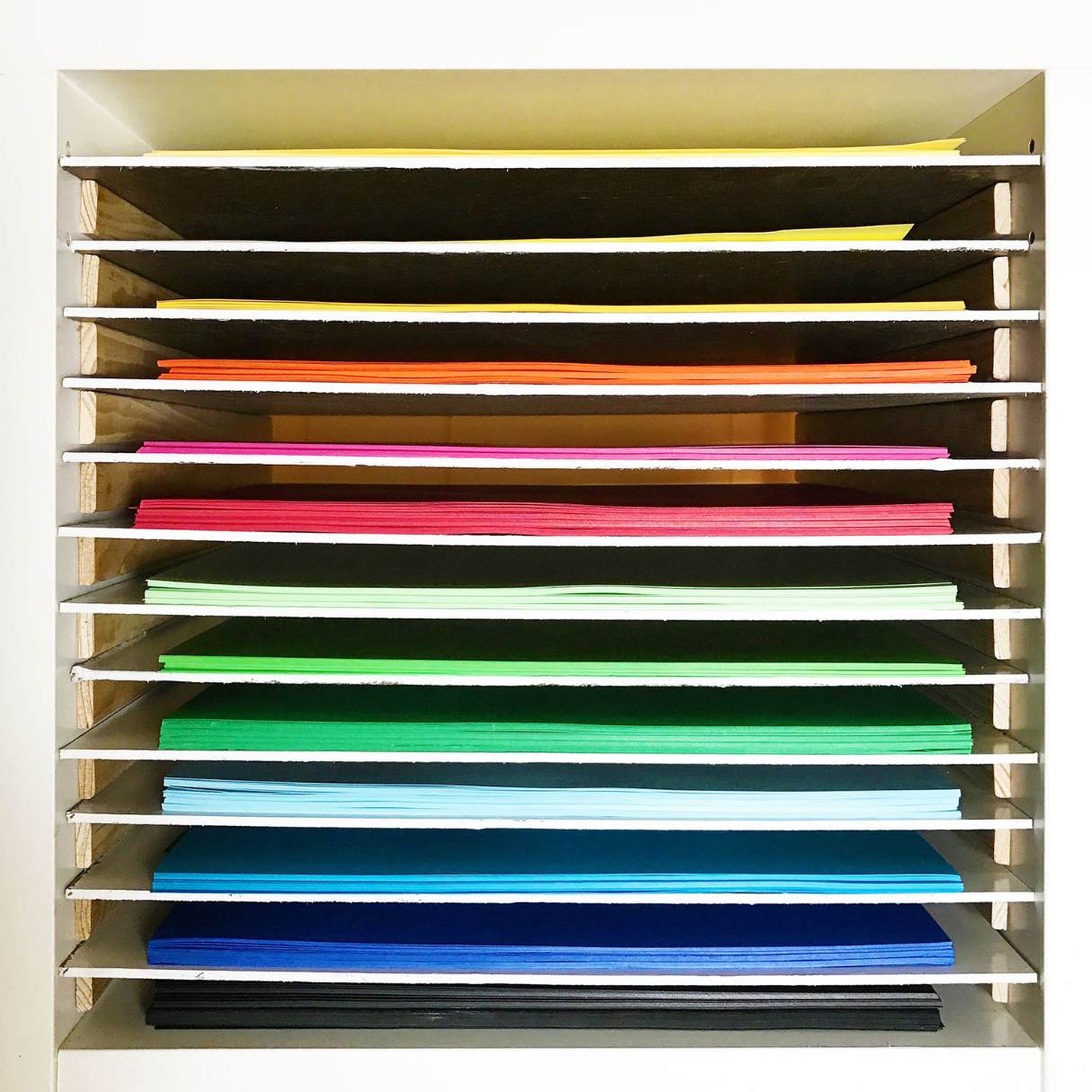
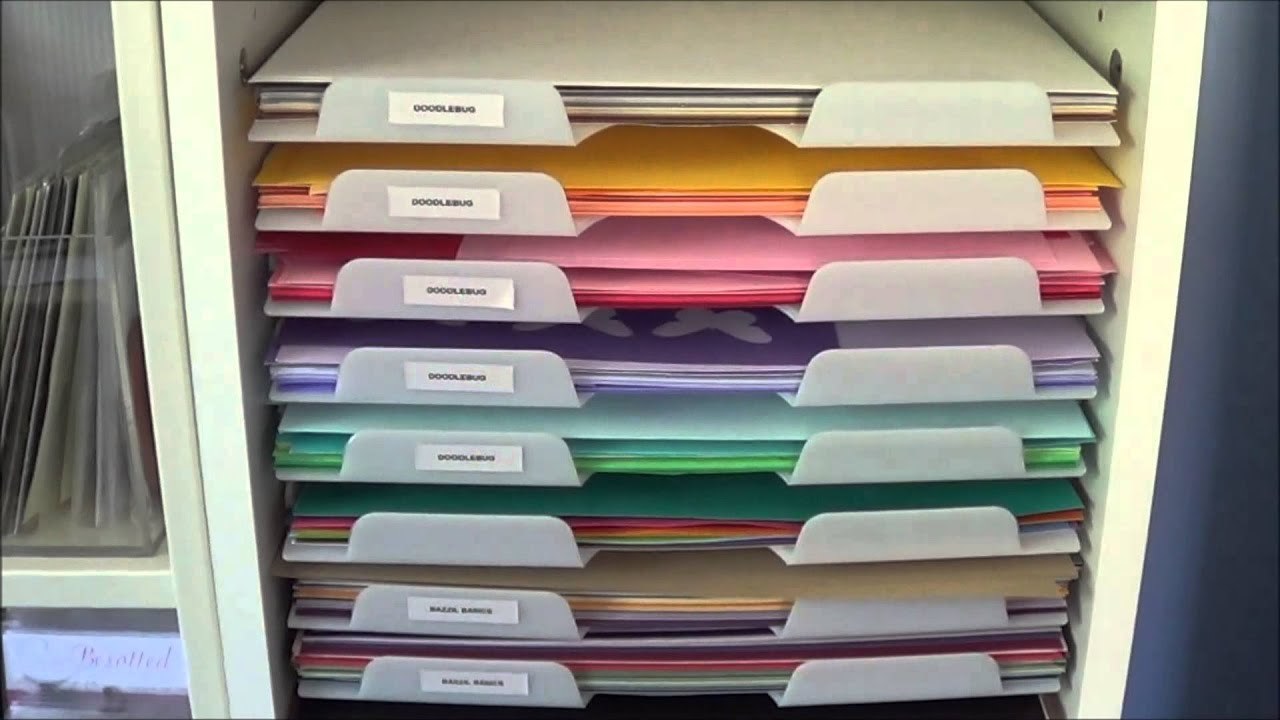
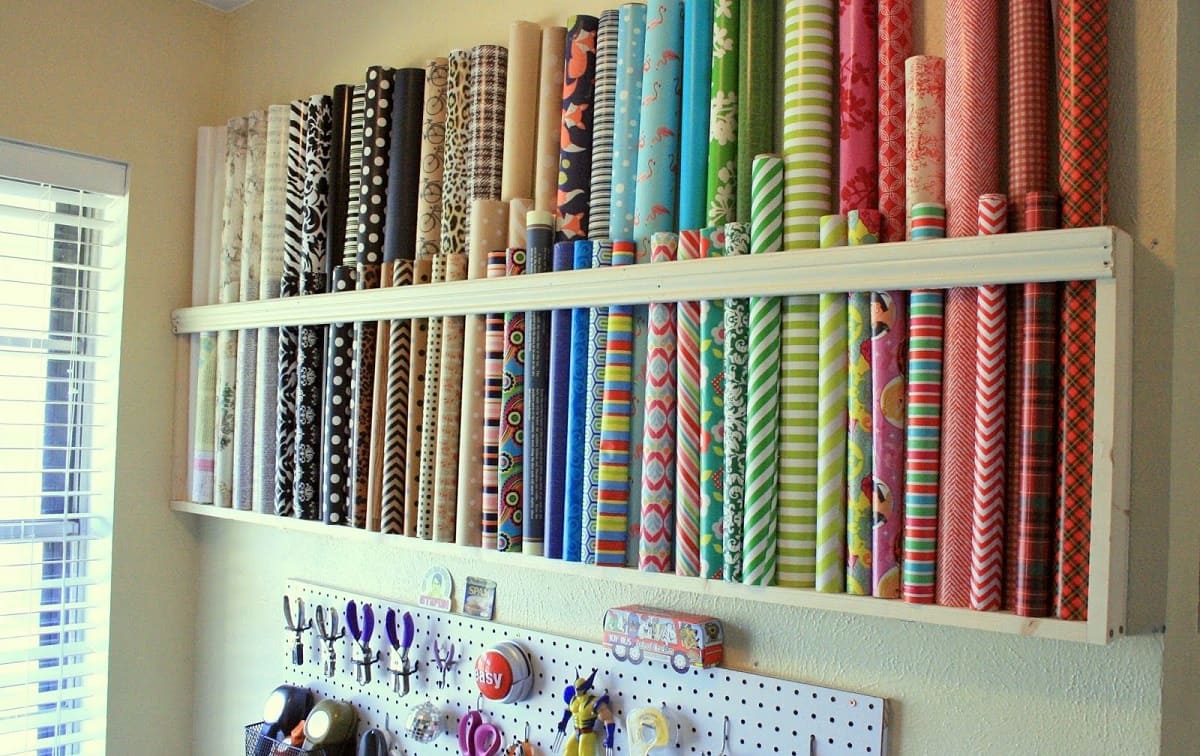
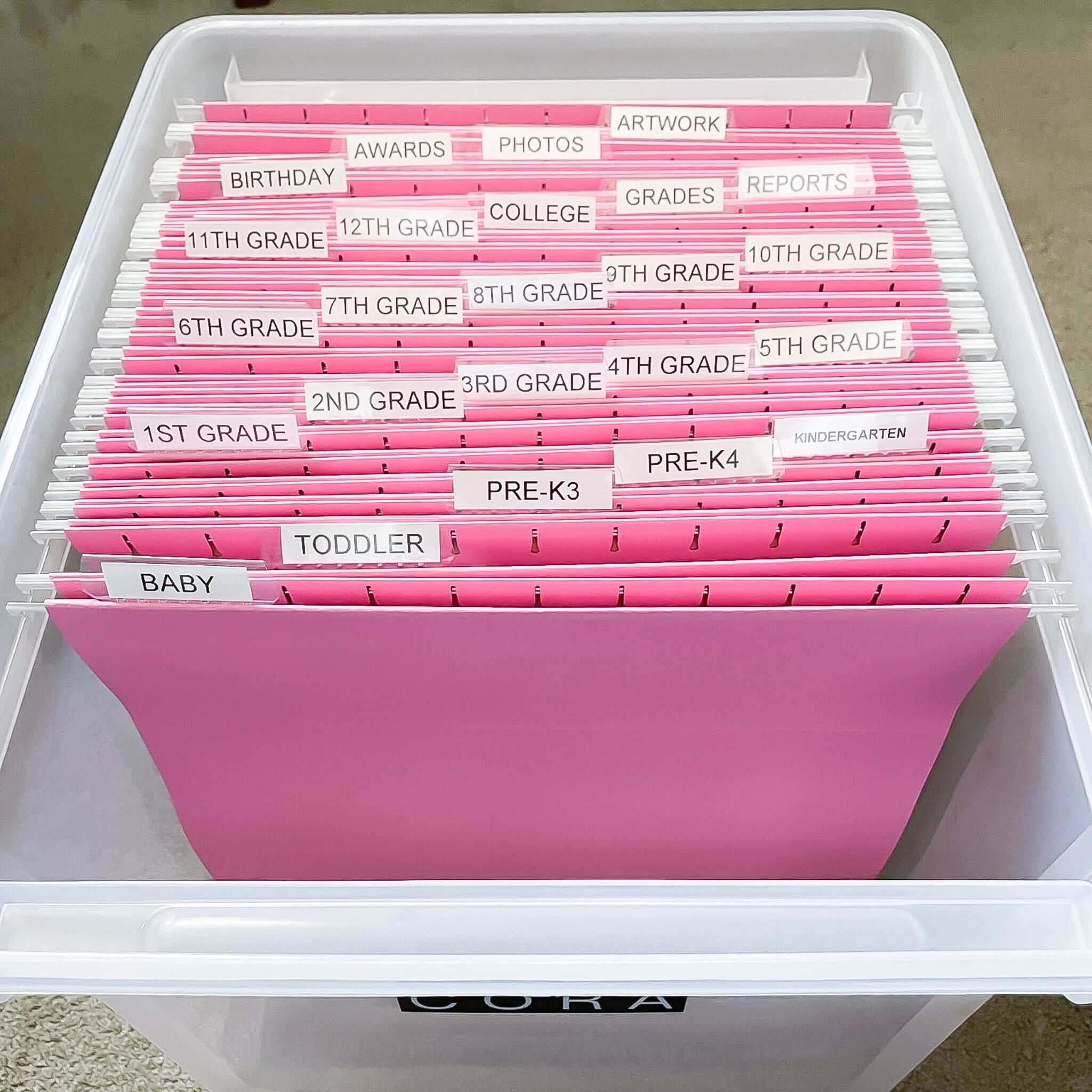
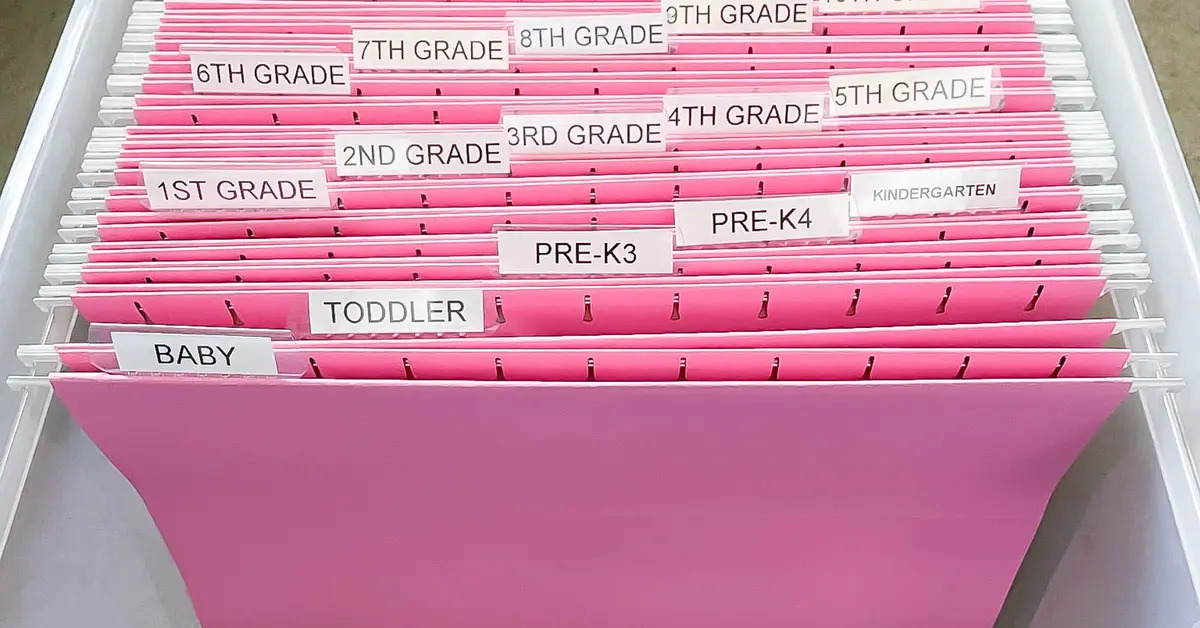
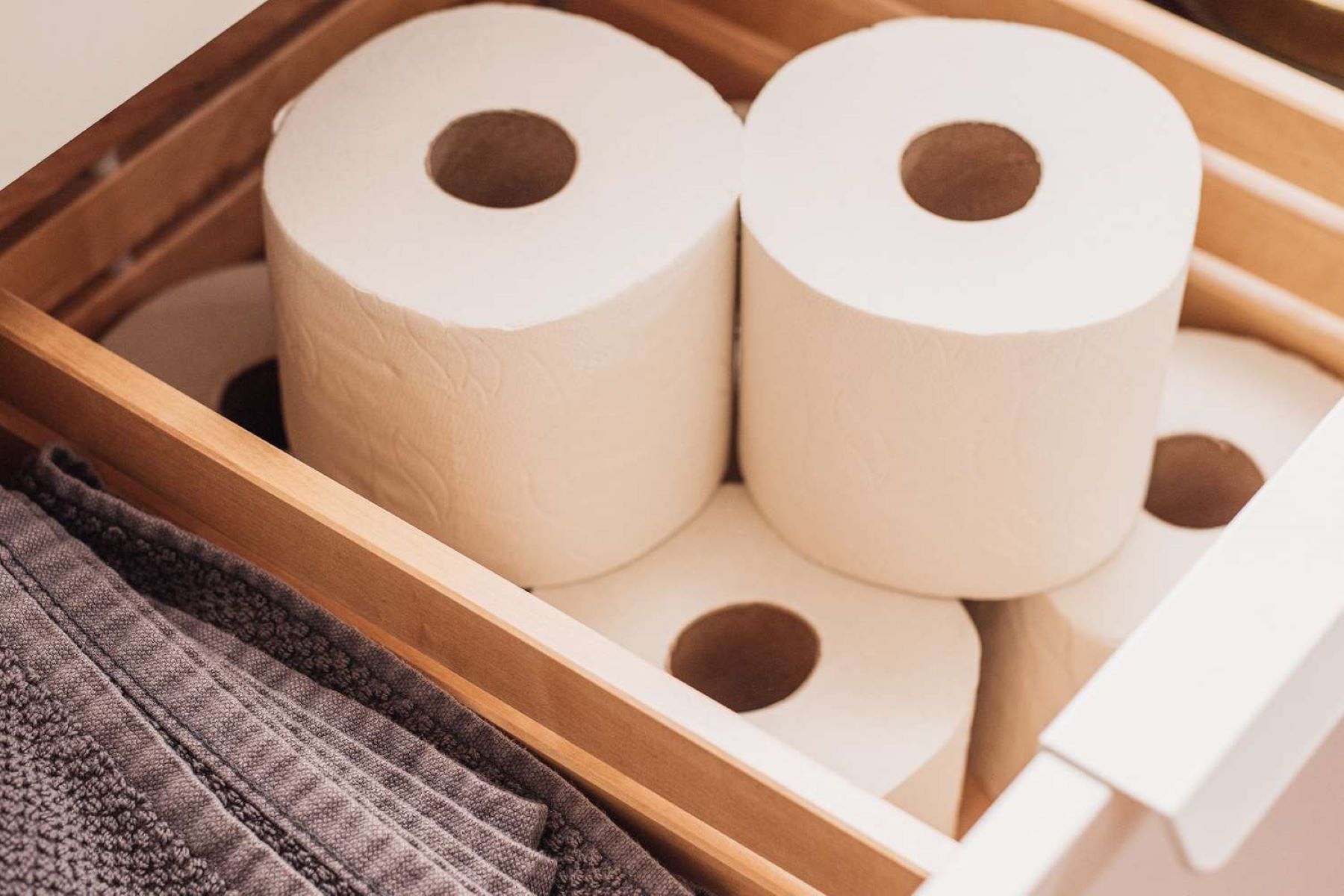
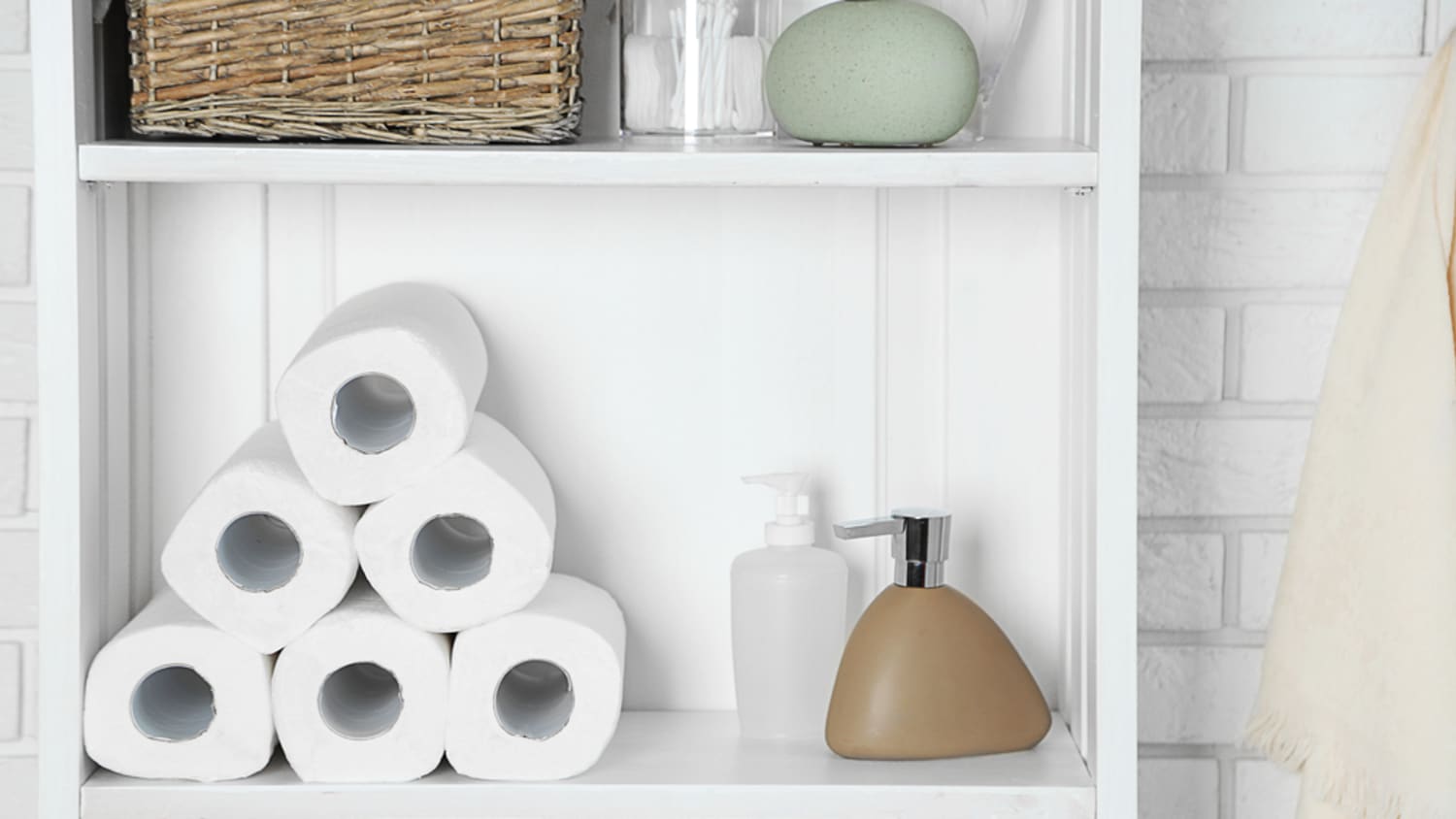
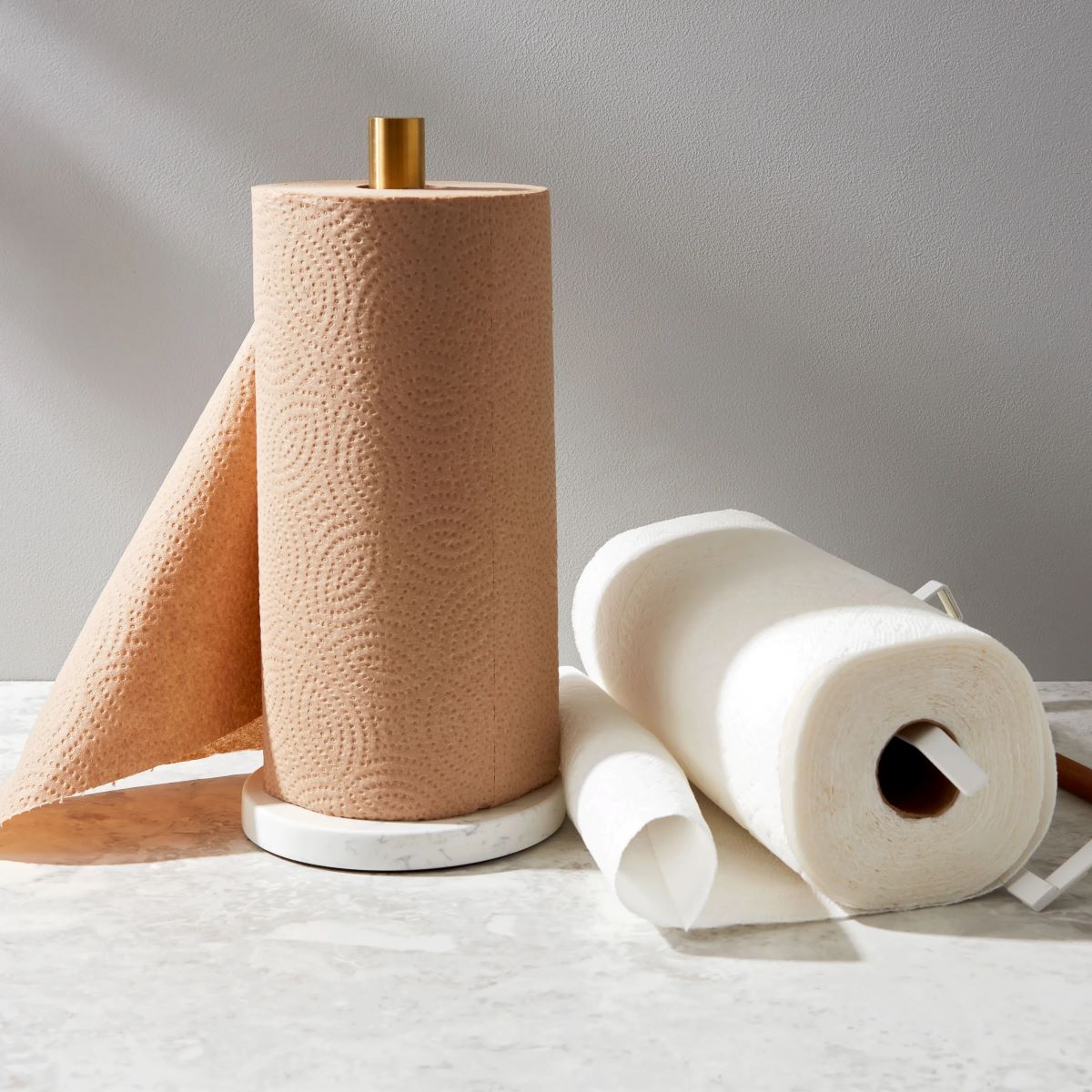
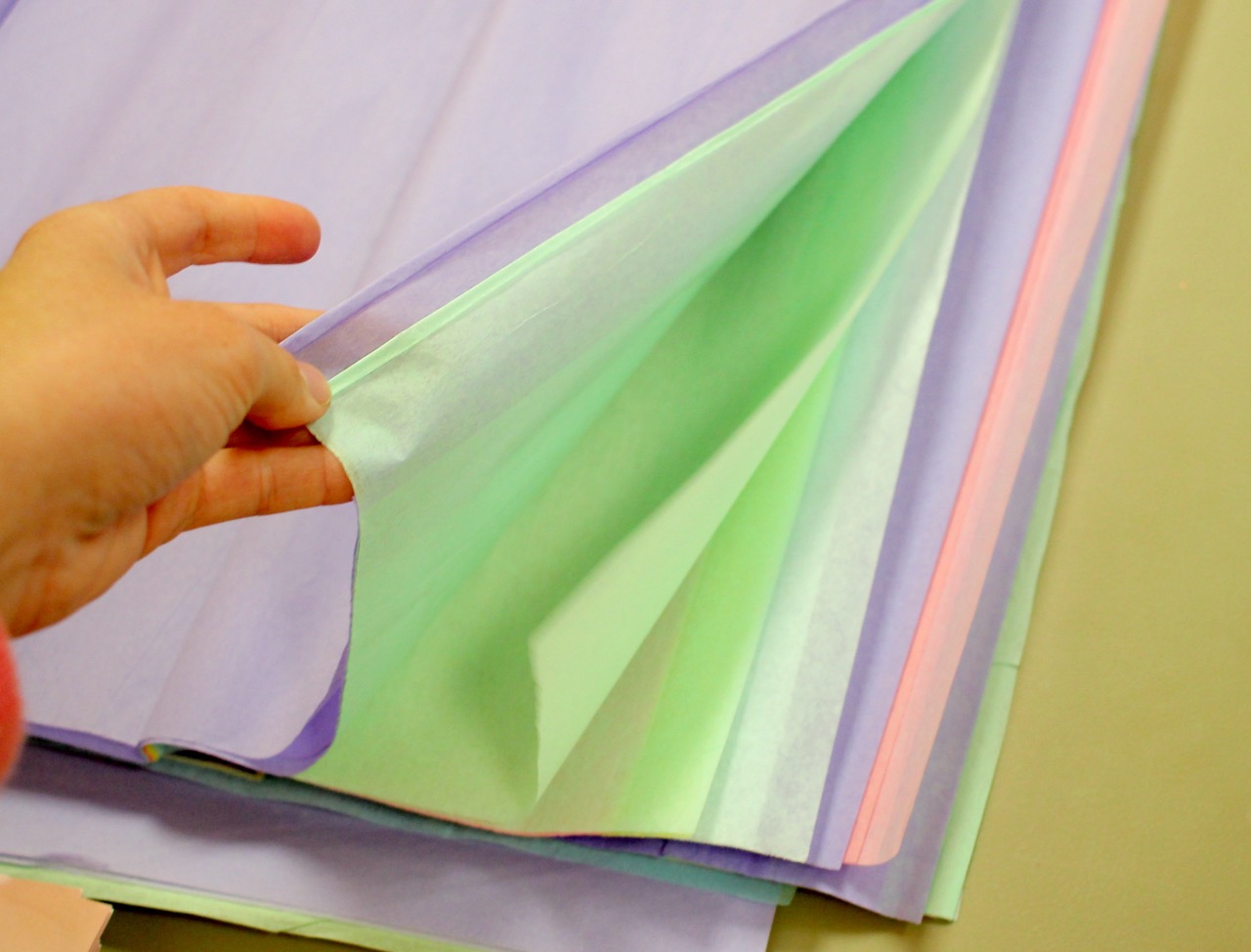
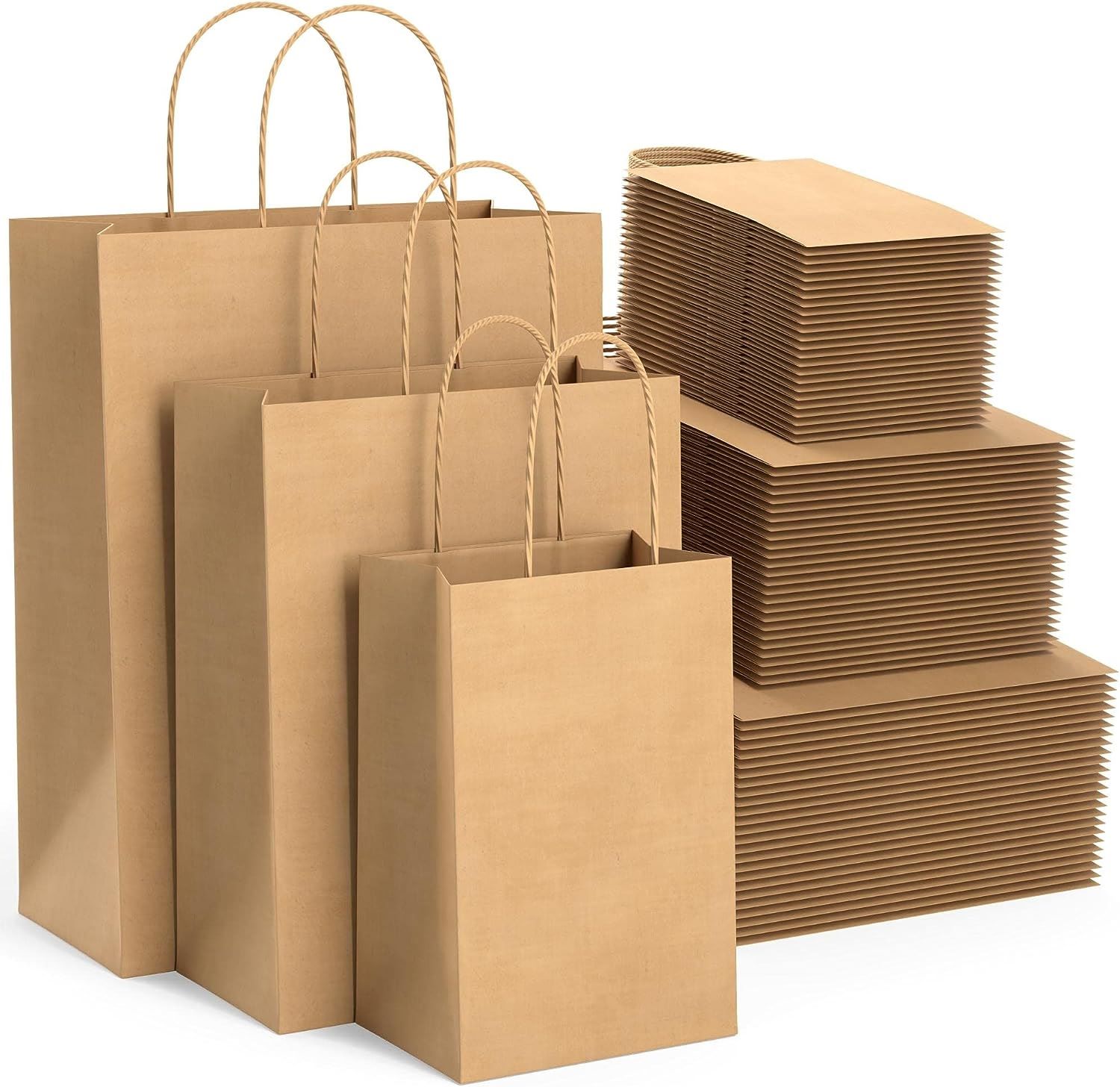



0 thoughts on “How To Store Craft Paper”